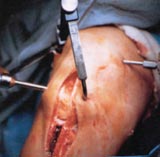Chronic back pain is commonly caused by fissures in the intevertebral discs of the spine. This injury has been followed by this blog, as it is commonly found in rowers, due to the stress they experience on their lower backs. Surgery to correct this problem comes with risks, long recovery periods, and other hurdles, and is not the only available option. The articles linked to below examine a non-surgical technology developed called Intradiscal Electrothermal Therapy (SpineCATH IDET). The article linked here comes from Science Daily, and discusses the technology, which started being widely available to patients around 2001.
http://www.sciencedaily.com/releases/2001/01/010124074916.htm
How does this procedure work? It is a simple treatment done under only a local anesthesia or mild sedation. A needle guided by x-ray is inserted into the afflicted disc, and then a catheter is passed through it and into position. The catheter is then heated, applying heat to the disc. This triggers a significant reaction in the disc causing the disc wall to heat up, and the fissures to contract and close. Along with this, the nerve endings may be desensitized, and/or the bulge of disk material can be reduced.
Chronic lower back pain is not exclusively found in athletes, in fact Science Daily reports in the article that one in five Americans suffer from back pain, and that non-surgical treatments are actually the most common. Technology like this is important because it offers athletes, and countless other people who experience disc-related back pain, a treatment option that is minimally invasive, and that also differs from more traditional non-surgical methods such as physical therapy and pain medications. It is great to see technology being applied not only to surgical procedures, but also to methods that are less invasive, and thus often carry fewer risks.
While there is still a recovery time required for the disk to heal (stated at 12-16 weeks), in the article below Dr. Amundson explains how a typical patient might be sent home after the procedure “with a Band-Aid over the needle insertion site.” That sounds a whole lot better than a large surgical incision.
For a discussion of the SpineCATH IDET procedure, possible side effects, and criteria for treatment look at the following article for a question and answer session with Dr. Glenn M. Amundson, an Orthopedic Surgeon about IDET:
http://www.spineuniverse.com/displayarticle.php/article217.html







-edit3.jpg)



